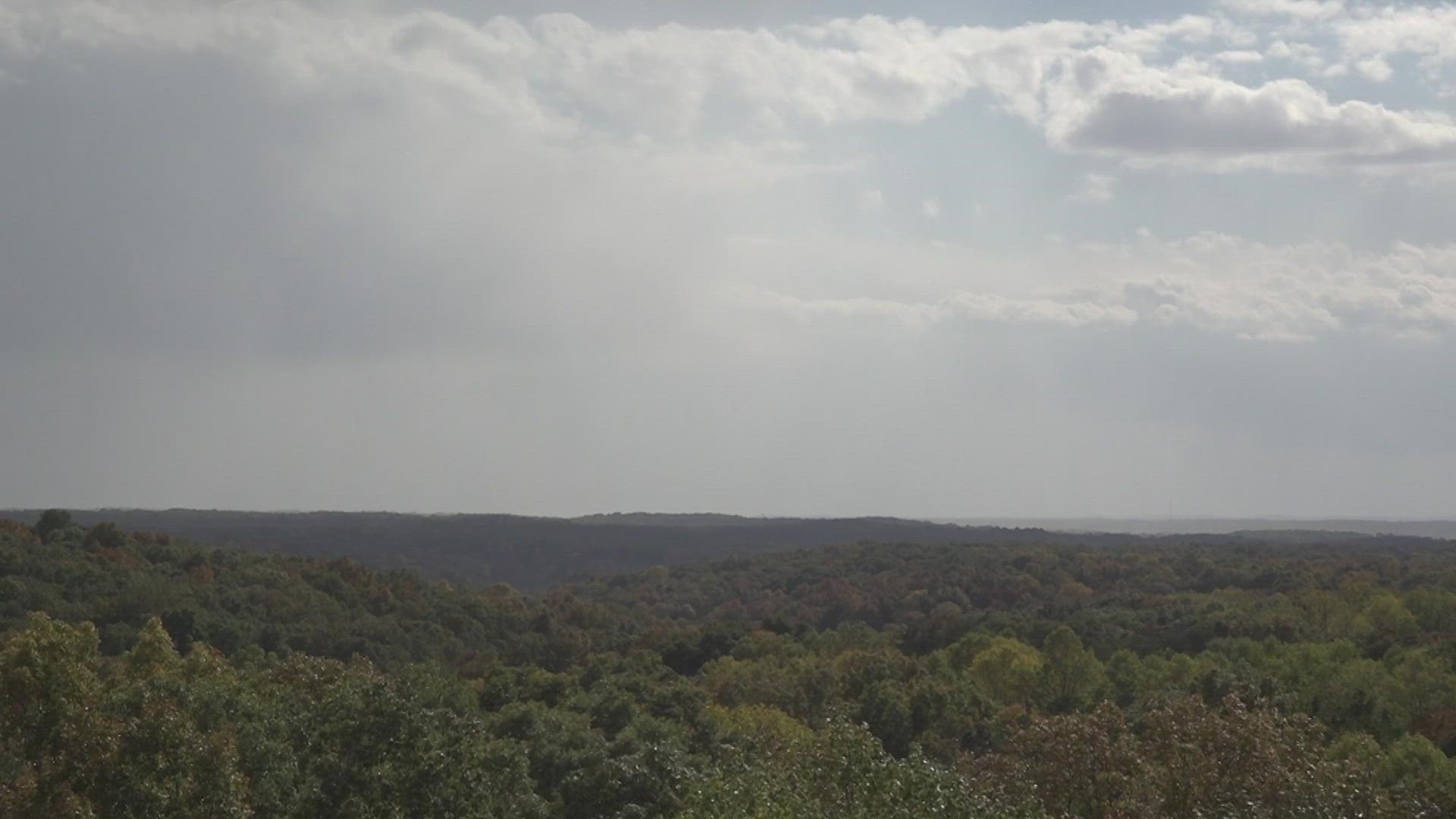Soul of the Forest
A controversial project slated for Hoosier National Forest underscores a larger struggle percolating over America’s trees.
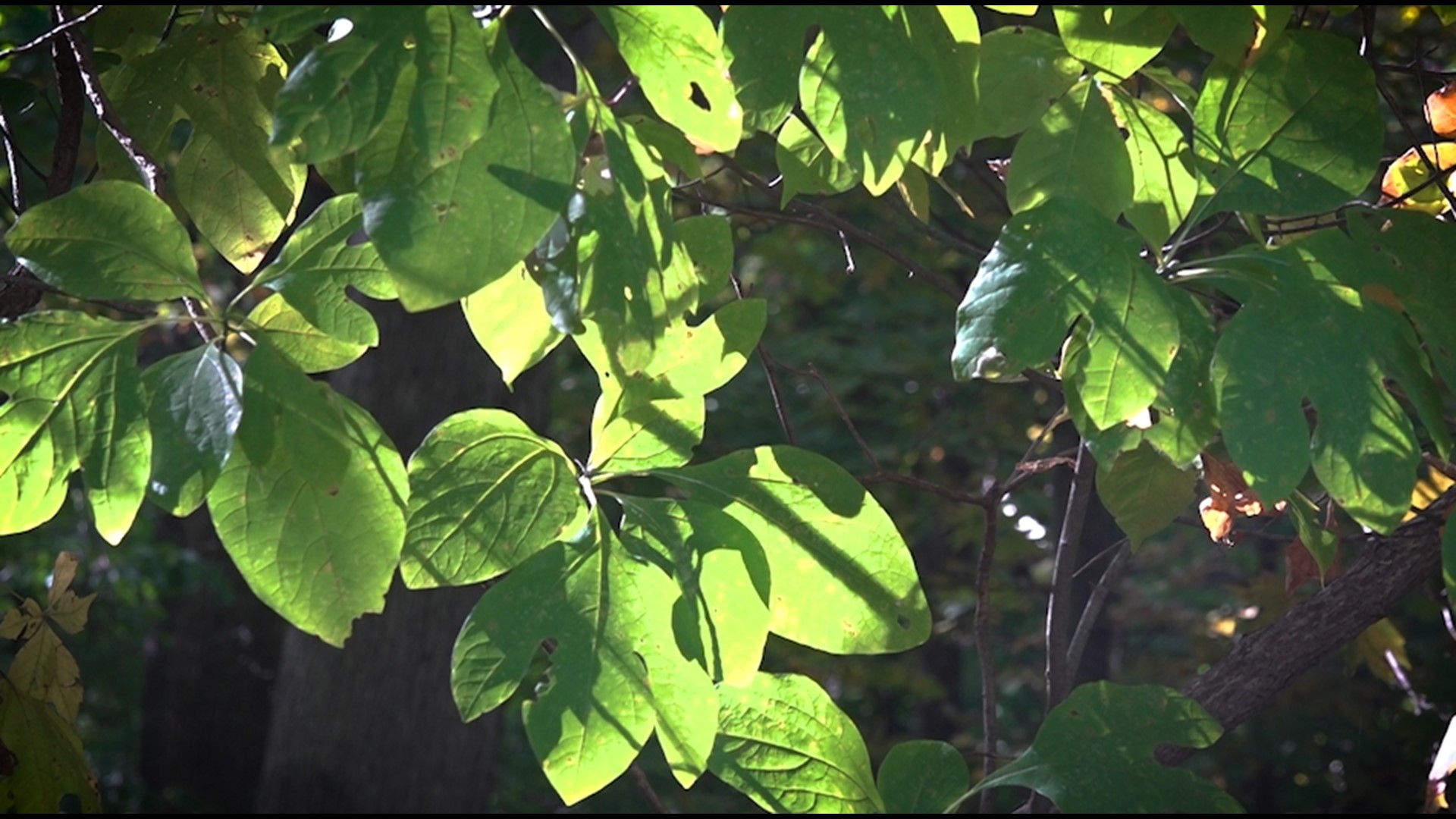
A massive change happens along Indiana’s southern half, almost a third of the way down the boot. Hills rise out from flattened cornfields. The limestone juts up high where karsts carve down deep, in a place where intense glacial forces formed a landscape well apart from the flattened ones Indiana became known for.
Few people can claim tangible evidence of some generational tie to this ancient land, awash in white oak and shortleaf pine. Robbie Heinrich can though, in the form of a humble sheepskin deed made out to his 10th time great-grandfather, made dignified through the neat penmanship of James Madison, the fourth president of the United States.
It was signed in 1811. The family’s 93-acres of property in Orange County bore witness to the happenings along the Buffalo Trace - a trail carved by buffalo migrations years ago that eventually coalesced into the Oregon Trail.
“Our property has got some trees that are dated 250 years plus that saw the buffalo roam this area. They saw all my generations of grandparents farm the land. I, as a child, have hunted and played and enjoyed them,” Heinrich said.
This sheepskin deed has, within Heinrich family lore, held a revered place on the mantelpiece, passed from son to daughter and so forth, even landing briefly into the hands of Governor Eric Holcomb. In 2016, he declared no one in Indiana had owned a piece of land longer than Heinrich’s family had held onto these woods.

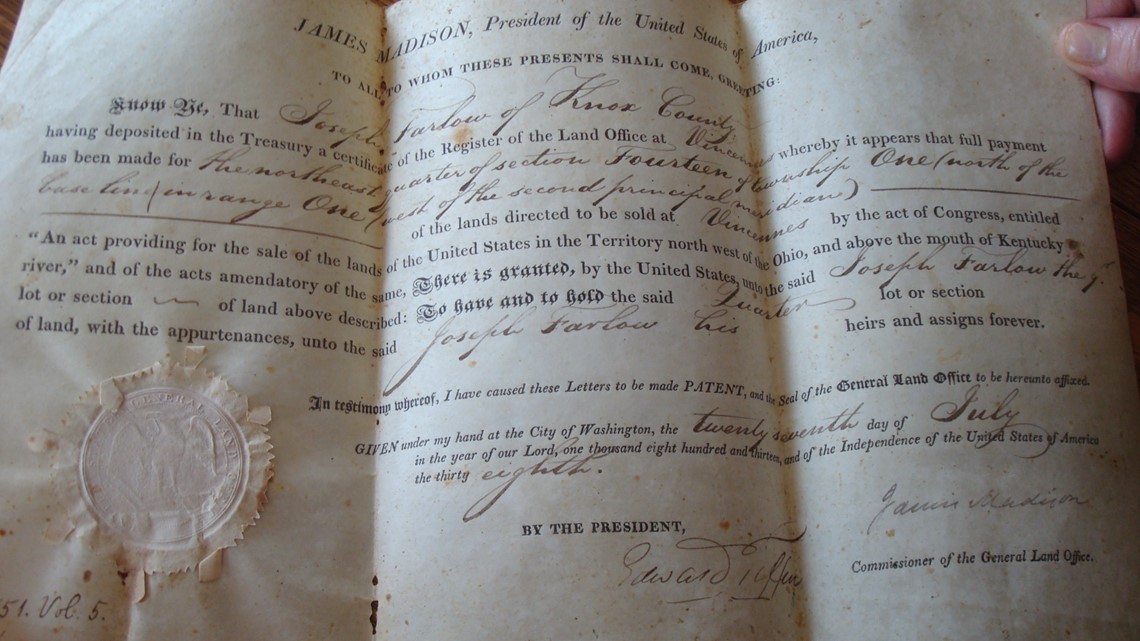
In October 2021 though, another piece of paper that could prove as transformative as the cherished deed arrived on Heinrich’s doorstep.
The paper bore the U.S. Forest Service’s insignia, stamped next to the title: ‘The Buffalo Springs Restoration Project.’ It was notice of their intent to log more than 5,000 acres of trees near the family’s home, lay down nineteen miles of road construction, and turn 8 of 13 miles of horse trail into gravel log road.
Thousands of acres would be burned. Herbicide treatments were planned as well.
Heinrich read the notice, baffled by the word “restoration.” To him, the project would destroy the land he loves or, at best, leave it unrecognizable for his young children.

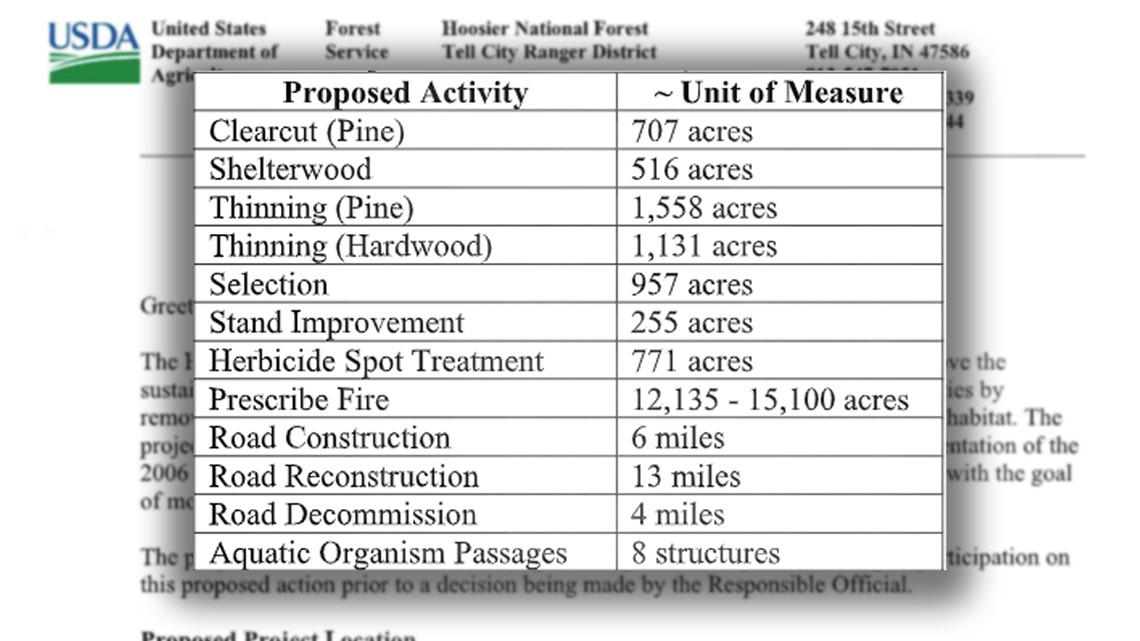
“The more I've learned about this project, and the lack of information shared with local residents and landowners, or any people that are interested in Hoosier National Forest, the more involved I've been able to get,” Heinrich said.
Inside the heart of Hoosier National Forest, the last truly wild place in Indiana, a deep chasm has formed - between longtime area residents like Heinrich, environmental advocates, and U.S. Forest Service managers - over the proposed Buffalo Springs Restoration Project.
Forest Service leaders maintain that burning, cutting, and spraying thousands of acres of mature trees is necessary to preserve the forest’s “overall health.” They say it will protect the wilderness near Patoka Lake in southern Indiana from the impending stressors of climate change.
U.S. Forest Service District Ranger Chris Thornton is from Tell City. Like Heinrich, he grew up exploring the wild thickets throughout southern Indiana, especially the area near Lincoln’s Boyhood Home.
He will soon be tasked with signing off on what could be the most transformative project in the forest’s history. He believes failure to implement the Buffalo Springs Restoration Project in this specific part of the Hoosier National Forest would weaken it considerably over time.
“I think the general public probably wants the forest to stay just like it is now forever. And I agree, it’s beautiful,” Thorton said. “But the Forest Service people - the specialists - are thinking 100 years down the road. And what kind of stressors are happening to the forest now? How can we set it up to be good for the next generation?”
The project would further a larger U.S. Forest Service initiative to sustain oak-hickory ecosystems in the forest, which they said are “important to keep…on the landscape as many wildlife species have evolved with it and depend on it.”
They also aim to create larger age diversity between different tree species within the forest in order to “provide for diversity in wildlife species,” according to the proposal.
“Our forest is all pretty much the same age. We call it even-aged. That's not good to have trees that are all the same age, because they're all going to get old together. Which isn't a bad thing in some part of the forest, but you want to have that diversity. You want to have those younger trees coming on too,” Thornton said.
But several environmental advocacy groups, including the Indiana Forest Alliance, Sierra Club, Protect Our Forest, Save Hoosier National Forest and the Hoosier Environmental Council, believe the Forest Service is making a mistake.
They maintain the Forest Service is operating within an archaic framework that profoundly – and erroneously – simplifies the makeup of a complex forest system, and that the real reason the Forest Service is moving forward with the Buffalo Springs Restoration Project is because they want to auction off its most valuable trees for profit.

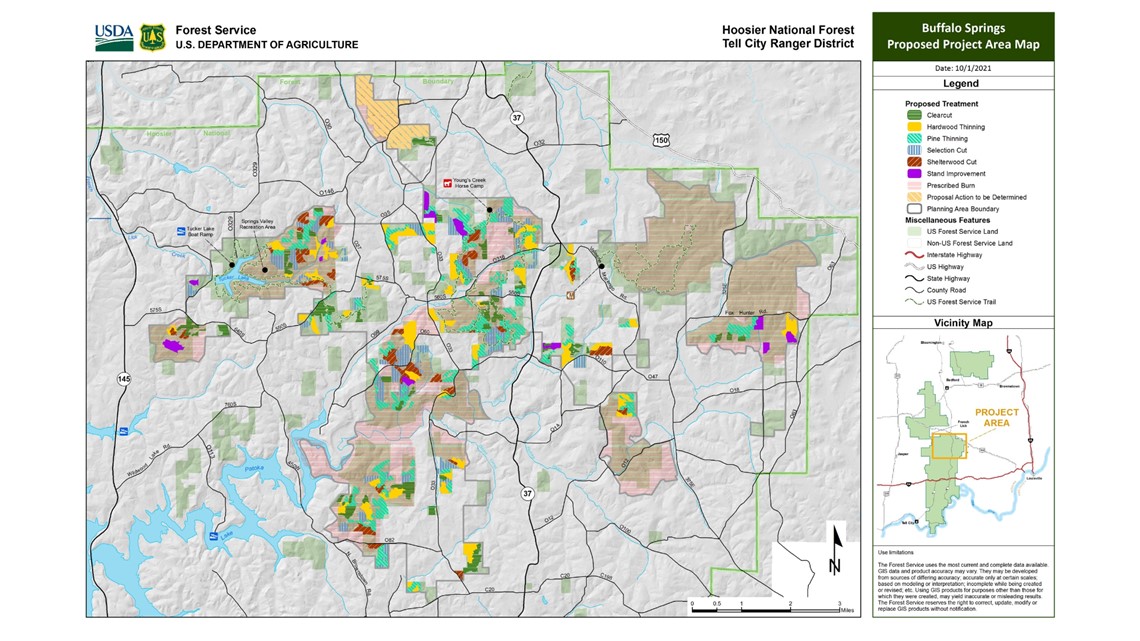
“This does not mean they're bad people, but it means they respond to perverse incentives that incentivize cutting down more and more highly valuable trees to maintain budgets, so they can do all the other important work that the public expects them to do,” said Andy Mahler, who lives near the forest and is affiliated with the Save Hoosier National Forest group. Mahler founded the group 'Heartwood' and has been a forest activist for more than 20 years.
At the crux of their dissent is the belief that the Forest Service is moving forward with the project within the guidelines of an outdated forest plan they were legally supposed to update years ago, and which gives excessive permissions for logging and burning.
The National Forest Management Act of 1976 mandates forest plans for national forests be revised at least every fifteen years. Because the current plan is from 2006, advocates say it is already out of compliance. They maintain that the 2006 plan did not take proper considerations for how to properly manage forests amid an ongoing climate disaster.
“Everything that they're proposing now is based on the 2006 plan, which is based on a planning rule which applied to all national forests that was written in 1982. So, everything they're proposing for the Hoosier National Forest now is based on the planning rule that's 40 years old, and the forest plan that's 16 years old, even though they're required to have a new plan every 15 years,” Mahler said. “We've been asking for a plan that is responsive to changing circumstances, changing public attitudes. And that is what they refuse to give us, because they are so wedded to the financial benefits of logging and burning the forest.”
Thornton said the current plan restricts land management activities on public land by a certain volume, which the U.S. Forest Service equates to acres. In the last 10 years, he said the Forest Service has used an average of 266 acres a year, or .13% of the whole forest, for commercial logging treatments. But he acknowledges logging and burning practices have increased in the Hoosier National Forest since the 2006 Forest Plan.

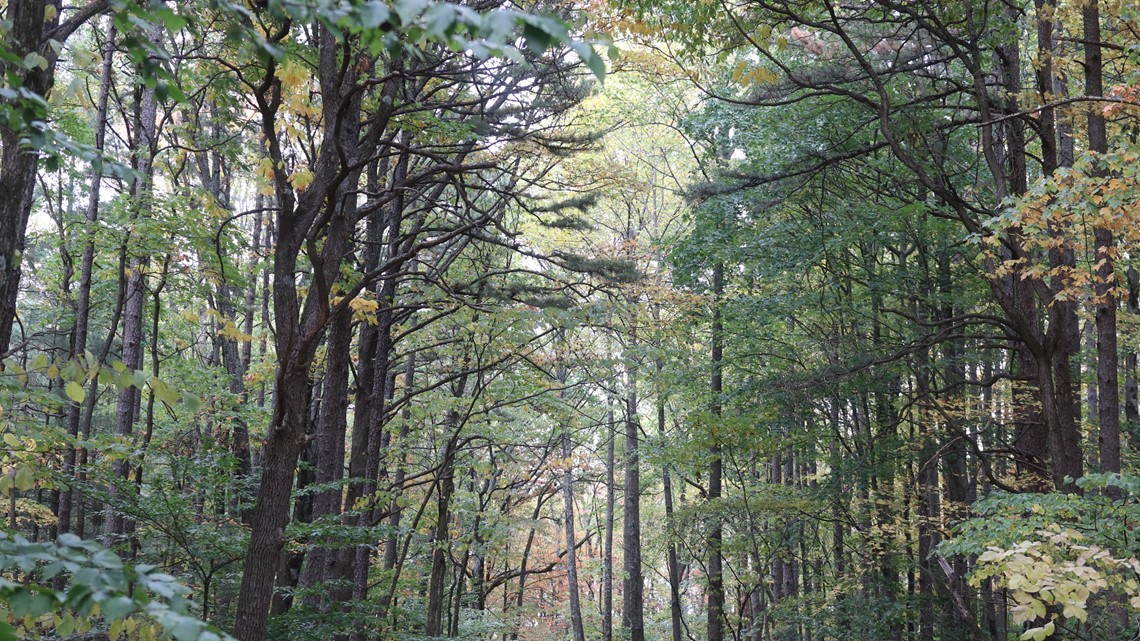
“[Logging] has definitely increased since the 2006 Forest Plan has come online. The Forest Plan, for lack of a better word, breaks up the forest into zones, management areas where different things can happen. So, on half of the National Forest silvicultural activities such as clear-cutting are acceptable. The management on the other half, areas like the Deam Wilderness that we're also close to - that's not going to happen,” Thornton said.
Fragmentation of the forest is yet another reason critics maintain the area identified by the federal government for the Buffalo Springs project should be left well alone.
The Hoosier National Forest is already one of the most fragmented national forests in the country. Although the Forest Service manages 204,331 acres of the Hoosier National Forest, the total acreage inside the purchase boundary is 646,949 acres.
That means when you look at Hoosier National Forest on some maps, you're not necessarily looking at the total amount of land available to the public.
A map provided to 13News by the Forest Service shows the bulk of Hoosier National Forest is already inaccessible.

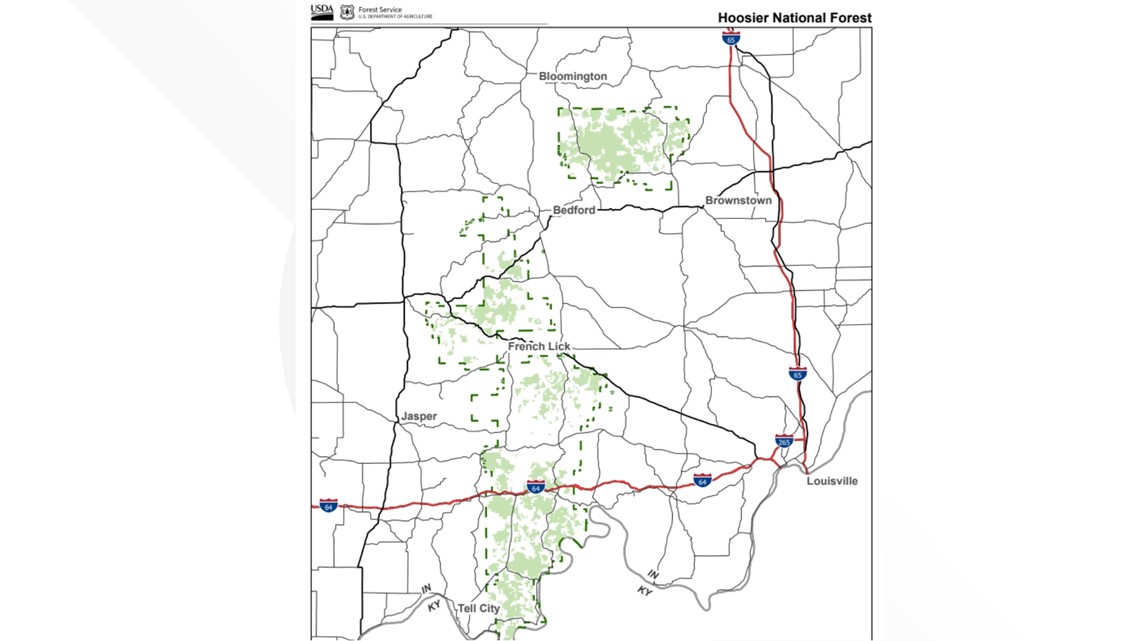
Similarly, a map from 2007 shows how much of the forest was privately owned around the time the 2006 plan went into effect. Areas in pink demonstrate land managed by private owners, while areas in green show areas managed by the Forest Service.
Those opposing the Buffalo Springs Project think the Forest Service could reach out to private landowners in order to further their land management goals inside the Hoosier National Forest, and leave public acres alone.
“That land is much more valuable for these other values - water quality, recreation, endangered species, climate moderation, and carbon sequestration than it is for logging and commercial extraction,” Mahler said.
That the project could potentially threaten water quality in nearby Patoka Lake has also been a massive point of contention for those opposing it.
Spread across three counties, Patoka Lake makes up the second largest reservoir in Indiana - a source of drinking water for some 65,000 people. Critics fear the removal of thousands of acres of pine trees, and the constant transportation of logging equipment in the area, would clog the reservoir with excess sediment pollution.
“That is a huge supply in southern Indiana, which doesn't have these giant glacial outwash aquifers that are in the northern and central part of the state, that people get their water here from,” said Jeff Stant, who is the executive director of Indiana Forest Alliance, an Indianapolis-based non-profit which works to protect forests across the state.

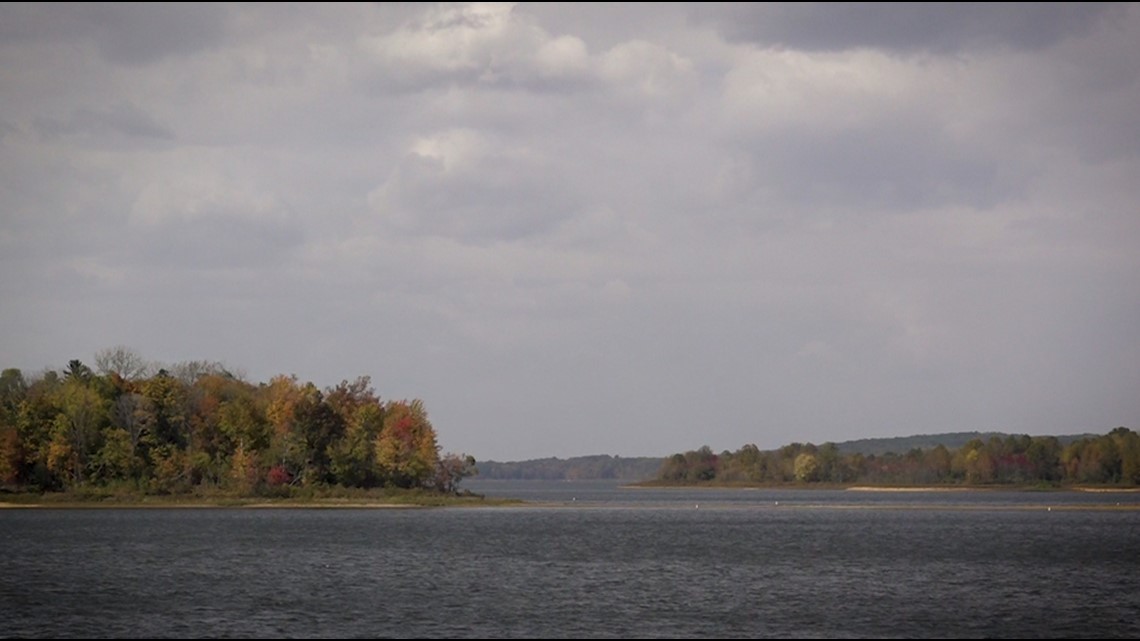
Concerns over how Forest Service projects in Hoosier National Forest could affect water quality for people living closest to it were the focus of a recent federal ruling.
The Houston South Vegetation Management and Restoration Project, based in a northwest corner of Jackson County, is a similar proposal to the Buffalo Springs project. It would aim to burn as many as 12,300 acres, and apply herbicide to more than 2,100 acres.
Earlier this year, a federal judge ruled the U.S. Forest Service failed to properly evaluate the project’s impact on nearby Lake Monroe.
Despite that admonishment, the U.S Forest Service recently announced a “correction, supplement, or revision to the project’s Environmental Assessment was not necessary”.
The public has until Nov. 7 to provide input regarding the draft for that project. Many of the same groups who oppose the Houston South project also oppose the Buffalo Springs project.
Thornton, who made the decision that there would be no need for revision in the Houston South project, has heard the water quality concerns from the public. He said the Forest Service has a plan to implement management strategies to prevent erosion, which include collaborations with their staff of hydrologists and biologists to monitor the sediment level in water.
“The main thing that comes to mind is our water bars. The main area the logging equipment goes on is called the skid road. And then, we would rehabilitate those roads with water bars to divert the water before erosion can happen. And, we'd also seed and mulch those areas,” Thornton said.
Additional concerns have been raised that precious wildlife will face continued threats from the persistent burning, proposed for more than a decade, under the project.
Critics disagree with the Forest Service’s assertion that the project’s goal of increasing the overall age diversity of the forest would help provide a proper habitat to species who need early successional habitat to thrive.
“What they need is deep forest, deep hardwood forests, of a variety of trees. What they're doing here is trying to reduce this forest down to a much less diverse, unnaturally less diverse forest type that, really, is what existed here after the pioneers cleared this area and did a lot of the logging, burning to maintain it, as is cleared ground to plow and planting crops,” said Jeff Stant, who is the director of the Indiana Forest Alliance.


There are currently six federally listed and endangered species whose range includes Hoosier National Forest. The Indiana and gray bats are considered endangered, while the Northern long-eared bat was listed as threatened in 2015, according to the USDA. Three species of mussels are also endangered: fanshell, rough pigtoe, and sheepnose.
Those species, and many others, Stant said, will be threatened in large numbers if the project goes through.
“During so many times of the year they're burning these creatures – the ovenbird, the black and white warbler, the hooded warbler, the worm-eating warbler, these are birds that evolve nesting on the forest floor. If they've got their nestlings down in the forest floor in May, June, and they do some of these burns, what do you think happens to the nestlings? They're just fried alive,” Stant said. “We find turtles that are scarred. They can't outrun prescribed fire.”
What we are now seeing within our state’s largest forest is a conflict that will percolate well beyond the boundaries of Hoosier National Forest. Indeed, the challenges now facing all of these people and organizations dedicated to serving the natural world will go far beyond Indiana as the climate crisis worsens.
The challenge is this: in a world increasingly threatened by human-driven climate change, the fate of the natural world rests in the very hands of creatures who helped create it.
As the situation intensifies throughout our lifetime, how involved should humankind be? In a crisis of our own making, what role should the hand of nature play in its own regeneration?
Part I Way of the Forest
Tree species now inside Hoosier National Forest are not the ancient ones that bore witness to what happened on these lands prior to European colonization.
Over hundreds of years, the very nature of the Hoosier National Forest has changed dramatically from its original state. This transformation at the hands of settlers has created one of the thorniest points of contention between the federal government and environmentalists when it comes to its restoration.
Every group involved in the current conflict over the Buffalo Springs project maintains they advocate for what’s best for the overall health of the forest. But their preferred management method, what that looks like and how to get there, depends largely on what type of forest they believe should be restored.
For the Forest Service, the most resilient forest would be an age-diverse one, where oak-hickory systems are given priority because they make up the original ecosystem of Indiana.
The current Forest Plan challenges the Forest Service to maintain 4-12% of the desired area in young forest habitat. The Forest Service's strategy, then, aims to increase acres of trees in the 0-9 age class to foster certain types of wildlife.
The theory is that, done sparingly and intentionally, clear-cutting can mimic natural disturbances. The strategy has been praised by The Michigan Department of Natural Resources, the Young Forest Project and the Ruffed Grouse Society, who believe managing early successional habitat is key to nurturing a variety of species.
Ages of Trees Inside Buffalo Springs Restoration Project
For other environmental groups though, an old-growth forest, hundreds of years old and freed from the disturbances of humankind for the first time in generations, would represent the most resilient forest.
Old-growth trees - the often knotted, primordial types found among fogged up trails of Washington’s Hoh Rainforest or alongside paths shaded by looming redwoods in California, were cut down in droves in Indiana when the first European settlers arrived, leveraging the federal government’s policy of total war against Native Americans. That allowed them to supplant indigenous farming practices, which yielded an estimated four times the amount of crop, onto their homeland.

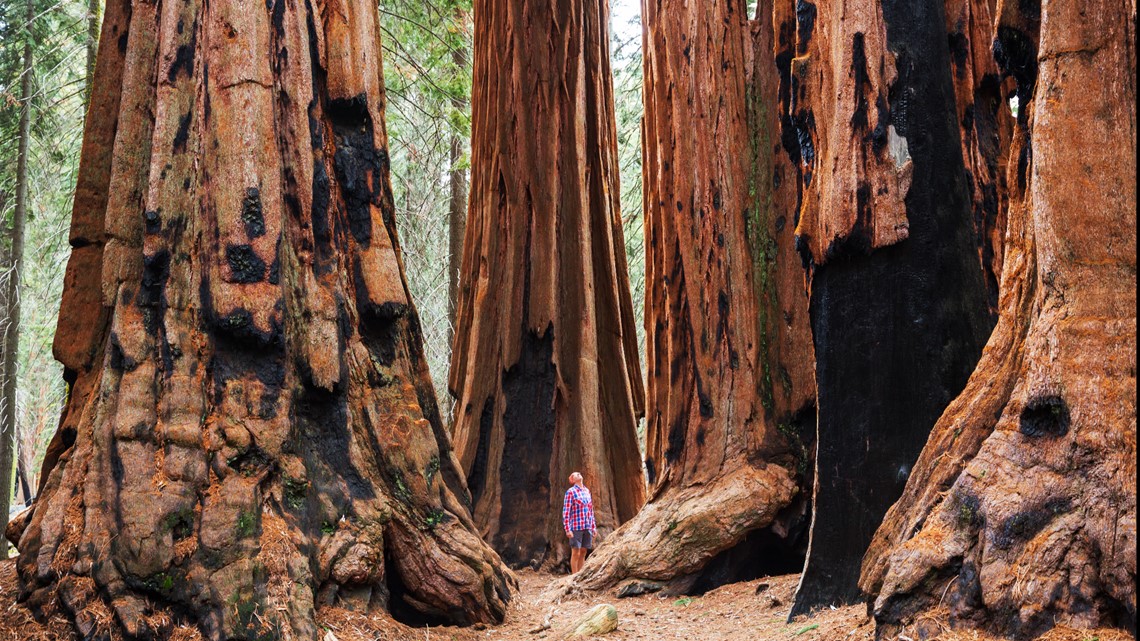
European farming practices relied on heavy deforestation techniques to incorporate monocrops, cornfields and soy rows, throughout the state. In the decade from 1810 to 1820, census records show the state’s population boom from 24,000 people to 147,000 people meant the end for many millions of trees.
As miles of trees were cleared to make way for farmland or roads, the number of trees in the state fell from more than 19,500,000 acres in 1800 to 1,500,000 acres in 1900, according to a study from Indiana University.
Those many millions of acres of trees were decimated within a century.
An analysis of field notes conducted by land surveyors, and further analyzed by the Historical Landscapes Laboratory out of Indiana University, show a variety of hardwoods dominated the hills of southern Indiana around what is now the Hoosier Natioanl Forest during those early years of deforestation.
Between 1803 and 1820, surveyors recorded 7,289 of the trees in the southern hills were Beech trees, followed by White Oak (5,051), Sugar Maple (3,685), Hickory and Black oak. More than 98 different types of tree species were found in the southern hills, according to that same study.
Plentiful, high quality trees were chopped first: black walnut, tulip poplar, black cherry. Later cuts removed “every other marketable tree on the land” and areas were often “burned repeatedly to clear brush”, according to the USDA.
Eventually, the land in and around what we now call Hoosier National Forest was settled and used for agriculture.
By 1899, Indiana led the nation in lumber production. In 1917, the image of a man cutting down a tree became enshrined on the official insignia of Indiana, a symbol which remains to this day. Within 20 years, most of what would become Forest Service land contained small farms. But as the Great Depression neared, many farmers gave up on the depleted soil and moved elsewhere.
The Forest Service didn’t purchase the land until 1934, at the request of Democratic Indiana governor Paul McNutt, who wished to create a national forest.
Many of the tallest trees we see today in Hoosier National are second generation, sprouted up after this time of deforestation.
In the proposed Buffalo Springs project area, many are more than 100 years old. Already, they make up some of Indiana’s most mature trees and, within a generation, could have returned to ‘old-growth’ status.
That means more than just age or appearance.
Scientists are increasingly finding old-growth forest ecosystems are essential for capturing carbon dioxide from the atmosphere. At the end of 2021, hundreds of climate and forests scientists sent a letter to Congress warning that logging on U.S. forests emits 723 million tons of uncounted CO2 in our atmosphere each year - more than 10 times that of coal.
“Greenhouse gas emissions from logging in U.S. forests are now comparable to the annual CO2 emissions from U.S. coal burning and annual emissions from the building sector,” the letter cautioned. "Protecting U.S. federal public forestlands from logging would not only reduce direct carbon emissions but would also increase annual drawdown of atmospheric CO2 by 84 million tons per year."
Then, earlier this year, President Biden reiterated the importance of America’s old-growth forests in an Executive Order signed on Earth Day. For the first time, it mandated that the federal government take inventory of America’s old-growth forests, because they are essential for capturing carbon.

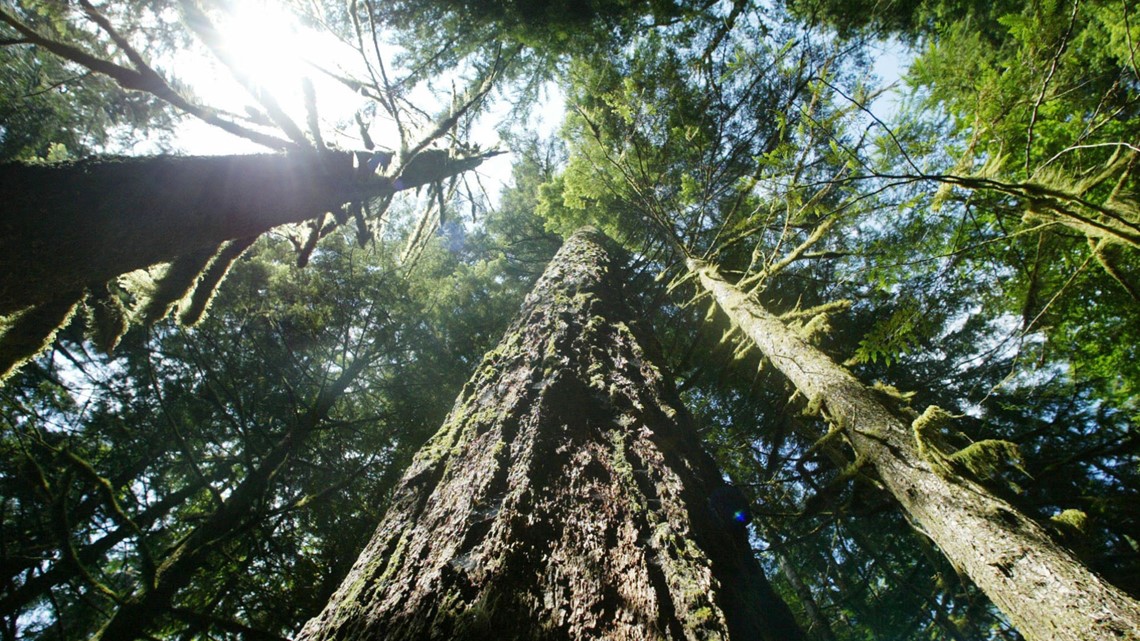
If the Buffalo Springs Restoration Project goes through as proposed though, opponents say Indiana may not see another chance to foster these many mature trees into truly old-growth forests within the state lines for several more generations.
“You can restore old growth forest here. 35 of the tracts they are going to log in here are between 100 and 132 years old. That means, according to biologists, they're less than two decades away from becoming old-growth forest again. The consensus is, old-growth forests are where there hasn't been any disturbance for 80 years. So that means, if they go in and do all this selective management and thinning in these tracts, or shelterwood cutting, it'll be four generations before it returns again,” Stant said.
But the Forest Service believes that, because many of the trees were planted at the same time, the forest lacks the age diversity necessary for the survival of multiple species, and that would create problems down the road as the forest ages at the same time.
In the scoping letter for the project, the Forest Service noted the project area is currently "dominated by mature forests".
“We’re all about having the diversity, because we know from the past you never know what kind of pathogen or things are going to come through and cause problems for particular species. So, we want to have the biggest diversity that we can have but we want to have the right trees, on the right sites, so that they aren't as stressed as they are right now,” Thornton said.

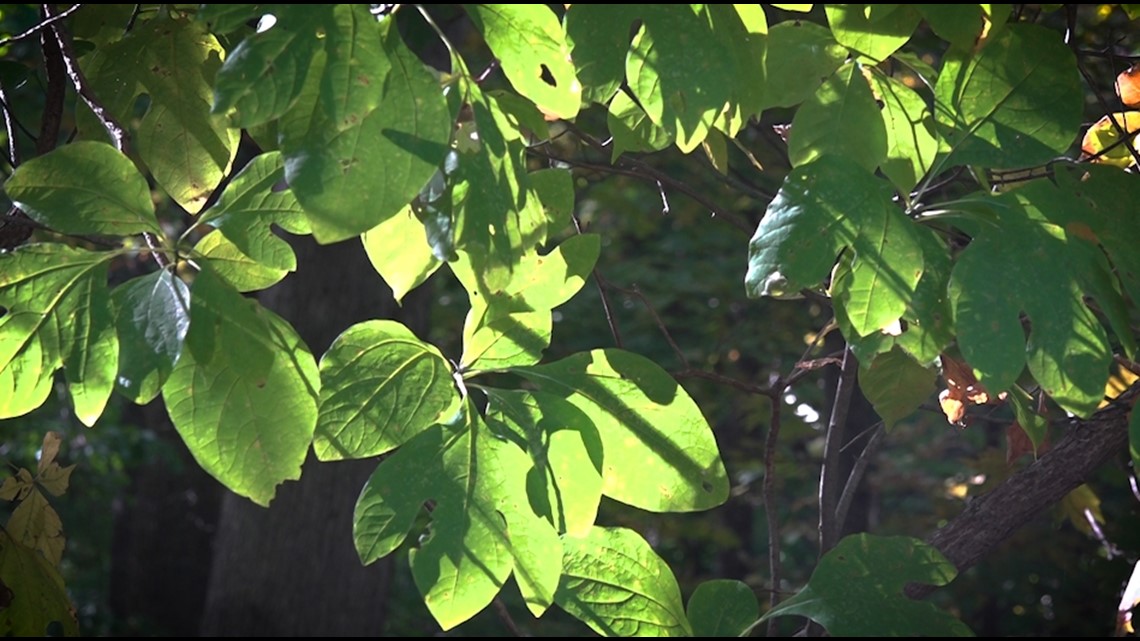
Environmental groups want the Forest Service to move beyond that point of profound degradation, which persisted throughout the 19th century, to give these second generation trees a chance to grow to their fullest capacity.
“The Forest Service is trying to reclaim to a baseline, a condition, that was actually very beat up in the 1860s, and 70s, and 80s. That's what they're trying to reclaim this forest to, instead of what the natural forest condition was before European settlers got here, which is more like 1740, 1750, 1760. This was a much more mixed hardwood forest than you see around you here,” Stant said.
Thornton said the Forest Service had to consider mitigating the impacts of climate change in choosing to restore the forest to an oak-hickory ecosystem, and increasing its age diversity by removing mature trees. Their internal studies found beech and maple may have a harder time adapting to the stressors of climate change.
“There's been a lot of research and there's winners and losers tree species wise, from climate change,” Thornton said. “With this project, we tried to think about species that would do well.”

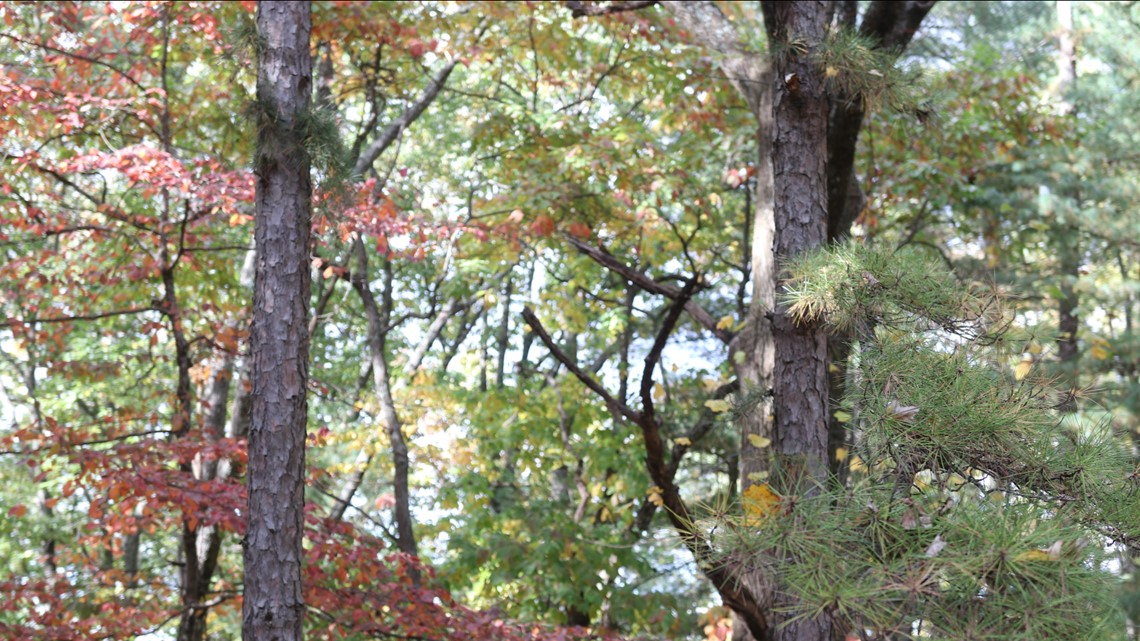
Prioritization of an oak-hickory ecosystem is yet another point that makes environmentalists who are against the project bristle.
“What you want to do is let nature figure out which trees are going to survive and which aren't. This is an incredibly important area of Indiana to do that, because it's the only area where we have enough for us where you can actually let that play out. What they're trying to do is manage every acre of forest here like it's a little garden, and we want to determine the winners and losers. When we don't know enough to know who the winners and losers are going to be, the best policy you can pursue is leaving it be,” Stant said.
Thornton said they have a duty to protect and prioritize trees that are native to Indiana. But with the logging and burning practices proposed under the Buffalo Springs project, it's possible other non-native species could infiltrate the understory and cause additional problems.
By cutting down trees through logging, the Forest Service would be removing forest canopy.
“Anytime that we increase the light, we definitely increase the chance that an invasive species could come into the area, along with the species that we'd like to have. So, that's a tradeoff to having the species that we need to have on those sites - is having an invasive species,” Thornton said. “It's a constant battle, you know. Managing the good things that come after harvest and burning, and then the invasive species that also come if you're not careful.”
The Forest Service conducts surveys one year after a harvest and three years after a harvest, to look for issues like that “in whatever appropriate manner is available for that species,” Thornton said.
The Buffalo Springs conflict is percolating at an interesting time in the lives of these second-generation, maturing trees who arose from degraded farm land. During a time when these trees have grown to the point they are considered mature forests, just a few decades from being an old-growth forest once more, that the Forest Service has put forth a proposal to cut acres of them down gives them pause.
And it’s here where we get to one of the most contentious pieces of this whole conflict. Why, environmentalists wonder, would the federal government propose cutting large swaths of maturing trees, even as scientists tout the role of old-growth forests in combating climate change?
They say the answer is simple: money.
Part II A Look At Other Forests
One of the biggest misconceptions about Illinois-based environmentalist John Wallace is that he once, back in the early nineties, chained himself to a tree in protest over an extensive logging project slated for the Shawnee National Forest.
Not true, he said. It was a bike lock.
“I used a U-shaped bicycle lock. I took a bicycle lock, and put it around my neck and attached myself to a log skidder,” Wallace said.
For 77 days in 1990, Wallace and other activists used their bodies to challenge timber harvests in Shawnee National Forest, one of the forests closest to Hoosier National Forest. Wallace was arrested twice, but the group’s efforts were ultimately successful. A judge banned logging in Shawnee National Forest, a ruling which stood for 17 years.

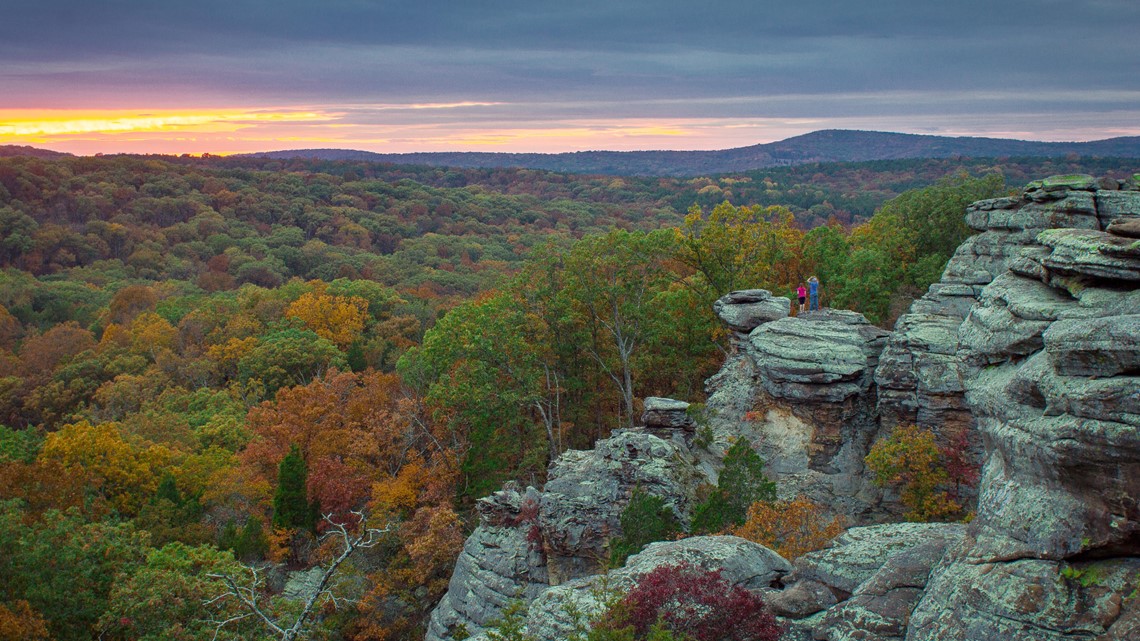
In 2013 though, the Forest Service successfully sued to lift the injunction, and logging inside Shawnee National Forest resumed. Wallace, who taught environmental education at Southern Illinois University for decades, grieved the decision.
“They're saying the same things that they were saying back 30 years ago. You know, that we're doing this to help the forest. And it's just - there's nothing further from the truth. To some people, I believe that they feel they're doing, truly, what they think is right. They just don't understand,” Wallace said.
Wallace believed then the underlying motivation for logging on the Shawnee was not to sustain the health of the forest, but to generate profit.
“The problem is, we have this agency that has this production mindset. See, the Forest Service and their mission is to be productive. To have productivity out of our forests, well, that means resources are coming out of the forest,” Wallace said.
Over the years, he’s seen the controversy over logging on public lands play out in eastern forests like Hoosier National and Shawnee.
Logging projects aren’t prohibited inside national forests the same way they are on national parks, but they tend to be massively unpopular, in part, because the Forest Service draws a profit by auctioning off those trees cut from public land.
“I’ll be the first to acknowledge a forest after it’s clearcut doesn’t look pretty,” Thornton said.
Logging within national forests is permitted because, though trees in national forests make up double that of ones in national parks, they are managed by different entities.
National parks - think Great Smoky Mountains, Yellowstone or Zion - are managed by the Park Service as part of the United States Department of the Interior. Their mission is to preserve “unimpaired the natural and cultural resources and values of the National Park System for the enjoyment, education, and inspiration of this and future generations.”
National forests, though, are managed by the Forest Service, a branch of the United States Department of Agriculture. Their mission statement is to “sustain the health, diversity, and productivity of the nation’s forests and grasslands to meet the needs of present and future generations.”
The Forest Service operates under a ‘multi-use’ strategy – considering all the uses of a forest equally including timber harvesting – while the Park Service emphasizes preservation of all wildlife and species.
WATCH: The Difference Between National Forests & National Parks
“The Park Service has a preservation concept where they want to not do anything to the land, and just let it go wherever it's gonna go. As much as they can, I mean, the land’s constantly changing no matter what we want it to do. The Forest Service is more of a conservation organization, where we want to be able to use some of the products from the land,” Thornton said.
Those differences in overall mission means we see tension over logging projects build inside national forests in ways we do not in national parks.
In 2019, an executive order issued by then-President Donald Trump instructed the secretaries of agriculture and interior to consider harvesting 4.4 billion board feet of timber from forest land and put it up for sale.
At the time, it sparked a national conversation about the integrity of trees in national forests, but logging did not start with President Trump. Regardless of who is in charge at the White House, harvesting timber for profit has always been part of the Forest Service’s objectives since its founding days.
“The last thing forests were founded for was to provide a supply of wood to the industry. So, that's something that we seek to do as well. That's not the primary purpose of the Buffalo Springs project. You know, it'll be a byproduct to that. If I ever heard anybody doing something for financial gain, or we're doing that to get more money out of this stand of trees, I'm not having that. Not at all,” Thornton said.
But the Hoosier National Forest is not the only one within the central hardwood forest area, which extends from northern Indiana down to the top of Alabama and Georgia, where the Forest Service is facing off against environmentalist groups and residents over land management projects that include logging.
Inside two national forests closest to Indiana, Wayne National Forest in Ohio and Daniel Boone National Forest in southeastern Kentucky, environmentalist groups have taken the Forest Service to court over projects similar to Buffalo Springs.
Complaints leveraged against the agency in both those lawsuits closely mirror those made by critics over the Buffalo Springs Restoration Project; that the Forest Service did not properly consider environmental impacts before proceeding with the project and that they did not appropriately include public input in their decision making.
Wayne National Forest represents the largest swath of publicly held land in Ohio. It’s ecology mirrors the Hoosiers so much that they were essentially managed in tandem between 1942 and 1992. The Ohio Environmental Council is challenging the U.S. Forest Service over a plan to clearcut thousands of acres of white oak from the forest.
Nathan Johnson is an attorney with the Ohio Environmental Council as they now take the Forest Service to court over the Sunny Oaks Project, something he calls the “largest timbering project in memory, maybe ever” for that forest.
“In terms of the illegalities, we’re talking about an agency that has failed to address or even acknowledge some of the aspects or factors in this, what it’s going to mean for the oak ecosystem,” Johnson said.
Specifically, the Ohio Environmental Council argued the Forest Service failed to consider the impact clearcutting would have on mycorrhizal fungi - close knit networks of fungi systems necessary for oaks to communicate and thrive.
“One of the things that is occurring when one goes in and clear cuts an oak forest, or an oak dominated forest, is that most likely there's going to be destroying the fungal networks that oak trees rely on. And those networks are probably going to be replaced by the sorts of fungal soils and networks that support competing ecosystems, like maple tree and tulip tree ecosystems,” Johnson said. “You go in and clear cut - when you destroy the oak soils, you're destroying part of the oak ecosystem. And that's something that Forest Service has not acknowledged. They really haven't wrestled with it, they've not accounted for it, they've not studied it in their environmental reviews. And that's something that legally is a live issue.”
Their group is arguing that dynamic creates a situation that makes it harder for oak ecosystems, the very kind they aim to restore, thrive. Forest Managers for Wayne National Forest did not comment pending upcoming litigation.
In Daniel Boone National Forest, the group Kentucky Heartwood has taken the Forest Service to court over the South Red Bird Project. In that project, they claim the Forest Service did not take erosion into account, and also ignored their own evidence that proved the project would increase landslides in the area.
“When the Forest Service or their loggers come in, and bulldoze these skid roads back and forth across the slopes, remove most of the timber, you lose a lot of what's holding those mountain sides together. And so, the Forest Service's really failed to acknowledge that,” said Jim Scheff, an ecologist with the group Kentucky Heartwood.
Like groups opposing the Buffalo Springs Restoration Project, they reject the Forest Service’s assertion that cultivating an age-diverse forest would enhance its overall health over time.
“They treat forests over 100 years old as just eminently susceptible to disease, decline, and death. They treat them as if they're not growing anymore, that they're not sequestering carbon anymore, they're just going to die. And, if they don't do something, now, they don't intervene, those trees are going to die. And underneath is going to be all maples, and it's going to be a maple desert with no acorns or hickory nuts for wildlife. And it's this oversimplified narrative that's very self-serving,” Scheff said.
Forest managers with the Daniel Boone National Forest did not respond to 13News' request for comment.
Both organizations now involved in litigation against the Forest Service said they believe increased timber targets are part of the reason we’re now seeing the largest proposals in the history of three national forests closest to Indiana.
“The agency really has its own culture of promoting narratives that just – whatever the problem, the answer is a chainsaw. Their answer is always logging,” Scheff said.
Data from the USDA’s Periodic Timber Sale Accomplishment Reports show in the last 15 years, from 2007 to 2021, timber targets for Hoosier National Forest increased overall. In 10 of those 15 years, the amount of timber harvested by the Hoosier National Forest exceeded their target goal.
Hoosier National Forest Timber Targets 2007-2021
Those increases mirror what's happening in the Hoosier National Forest's overall region. Region 9, an administrative area which includes Shawnee National Forest, and Wayne National Forest. It does not include Daniel Boone National Forest.
In 2007 668,668.62 CCF, or hundred cubic feet, had been harvested from the whole of Region 9. By 2021, that number had jumped to 1,081,173.62 CCF.
Thornton said the service could anticipate “anywhere from $50,000 to half-a-million dollars, depending on what they are”, and that the money could go back into the Hoosier National Forest for projects.
“One of the big things, and that's forgotten in the Buffalo Springs project, is there's eight aquatic organism passages - or culverts - that are undersized, that are inhibiting fish to get from one side to the other. And so, there's eight of those in this project that some of the timber sale receipts can be used to fix those culverts. Those are often several $100,000 projects that are hard to do without that money. We're hoping to benefit the watershed by some of the money that stays here on the forest,” Thornton said.
The recurring conflict over the logging projects has prompted some to advocate for national forests to be moved out of the USDA’s control and into the Department of the Interior through national park designation.
It’s something Wallace has advocated for in Shawnee National Forest.
“The Park Service has a mission that revolves around preservation of the resource, education and recreation. And, I think, all three of those components serve the overwhelming majority of Americans best,” Wallace said.
The United States Department of Agriculture also does not contain a preservation of cultural or historical branch within their organization in the same way the Park Service does.
Steven Stewart is a longtime area resident and historian who mapped the historic Buffalo Trace which bears the name of the current project. He believes the history in this area warrants protection on the level afforded by national parks, and fears for the future of places like Lick Creek Settlement, one of the first Black settlements in the state. Aside from a cemetery, much of the remaining history of that settlement is hidden underneath the ground.

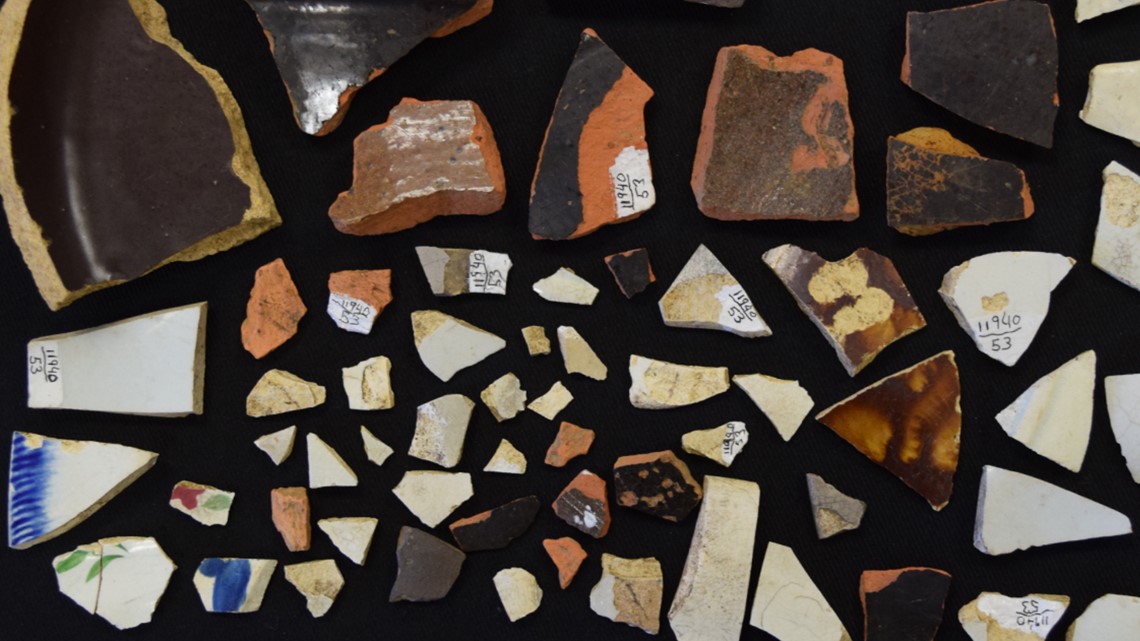
“They've assured me at all times these sites will be protected. Okay, they say, we know we're gonna save it – don't worry. But yet, that's not what they say on paper. That's not what they show us in these maps. That's not what they show with their treatment plans,” Stewart said.
Dr. Ryan Campbell is an archaeologist with the Center for Archaeological Investigations at Southern Illinois University. Years ago, his team helped lead research into the Lick Creek Settlement, a thriving community.
"The work that we've done at their farmsteads, which there been a few of them that we've looked at, seems to show that they had material culture, so like goods, plates, houses, that were just as nice or nicer than their than their white counterparts in the area. So they were living relatively successful lives as, as farmers in Orange County at the time," Campbell said.
His team proposed the Lick Creek Settlement should get a historical preservation marker.
"Our recommendations to the Forest Service have always been, especially in the Lick Creek area, because of the importance of that community, that they should protect those sites that there should be sites that are preserved and maintained for future generations, and if at all possible, put on the National Register of Historic Places. And just given an extra level of protection," Campbell said.
Campbell's team did not offer guidance to the Forest Service on the Buffalo Springs Restoration Project, but said in his experience working with them that they "take those recommendations very seriously".
The Forest Service said a mandatory survey of every acre within the proposed Buffalo Springs project area is ongoing.
“We don't want to ruin that history. And, there's no undo button. If you do go through one of those sites, you lose the context,” Thornton said.
Stewart said he mapped the area dozens of times, and believes it’s impossible for the Forest Service to properly preserve all the history in the area if they move forward with the burns and logging as planned.
The rich history of this area, Stewart said, has been overlooked by outsiders and the state at large, even as this sliver of southern Indiana provides multiple opportunities for tourism. He believes creating engagement around these historical sites could provide additional revenue streams to nearby communities.
Preserving the history, he said, means preserving the land around it.
“The land influences who you are. Think about Foxfire in Appalachia, and how distinct is the land and the people there in your mind. When you hear Smoky Mountains, you think Appalachia. This area is the same way – is the same in many areas. But the story that the land tells is the story of the people and the story that those that have lived here,” Stewart said.
Part III An Uncertain Future
While scientists and experts continue wrestling with the broader issues of how to make forests more resilient against climate change, ultimately it’s residents like Robbie Heinrich whose lives will be most changed by whatever policy the Forest Service pursues in the Hoosier National Forest.
He was an avid hunter and businessman his whole life. That he’s stood in front of several groups over the last few years in opposition to a logging project was a surprise.
“I think that our group is probably getting the reputation of being environmental extremists. And I can wholeheartedly promise you that is not the case. It is people from all walks of life. Never in a million years would I have thought that I would be in front of a camera saying don't log the trees,” Heinrich said.
At the very least, Heinrich believed if the federal government was going to move forward with a project of this magnitude, they would have provided more opportunities for public comment. Meetings the Forest Service held virtually due to ongoing threats from the coronavirus pandemic made many area residents feel sidelined from the process.
“A lot of the community in this area is not real tech savvy. You know, a lot of older farmers don't get to get on a Microsoft Teams meeting and hear what's going on. And the Hoosier National Forest, the way that they like to share information is through a tweet or through a Facebook post.”

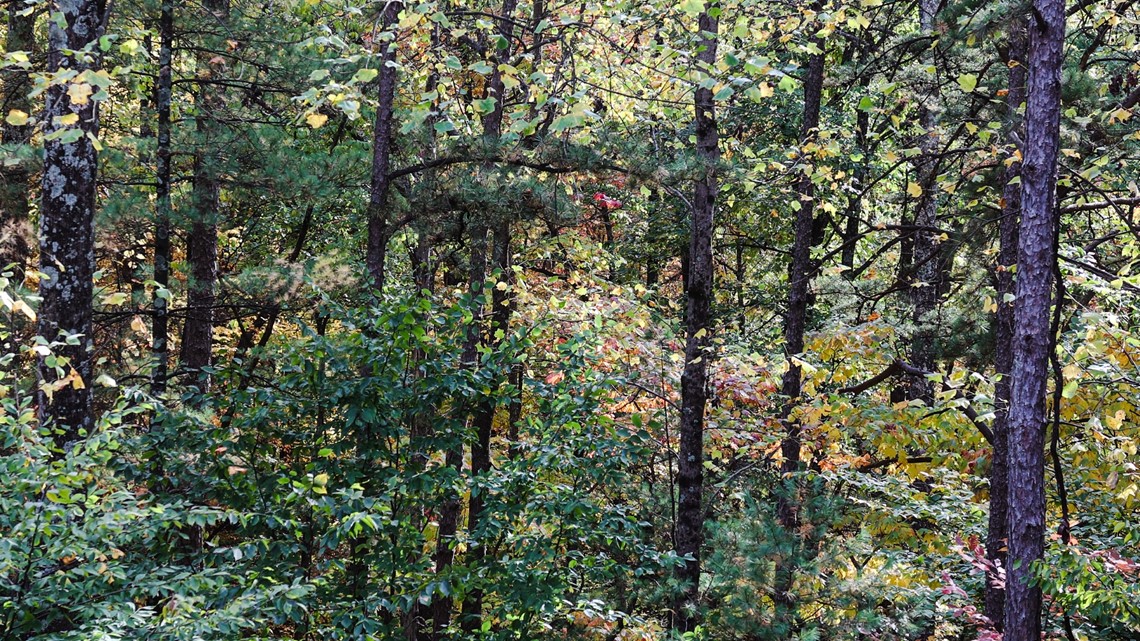
Heinrich believes the Forest Service did not put forward a good faith effort to reach older residents who may not utilize technology in a way that lets them learn about the project.
“The field tours they held were three or four tours limited to 10 people each on a Friday, that did not get shared via United States Postal Service. You had to be on your email to get that one or notice it on their website,” Heinrich said.
Yet, he envisions a forest where technology is easily leveraged to the benefit of both the forest and to generate more revenue. A QR code at the start of trailheads where people can easily make donations as they hike, or increasing the fee structure of the park are some ways he believes that could happen.
“The diversity and wildlife and vegetation are second to none. And we want to add to it. What our group is calling for action is, let's work on purchasing more land with the funding available for Hoosier National Forest, instead of logging what we do have, we can add to it,” Heinrich said.
Those broader ideas, though not the specificities, were presented in a plan they said their group presented to U.S. Senator Mike Braun last summer with a new vision consisting of the following variables:
More forestland on public and private lands in Indiana, build on incentives to encourage proforestation.
A New Plan for the Hoosier National Forest, which promotes public awareness for historical and cultural resources within Hoosier National Forest
A new sense of mission and values.
At the time, they said Braun agreed the area should be valued more for recreational opportunities than logging and that the forest needed a new management plan, though they haven’t heard much since.
Senator Braun did not respond to 13News’ request for comment.
As lifelong residents of southern Indiana, Heinrich and Stewart said it’s been disheartening to see how the federal government has honed in on the area, and made plans to widdle away its greatest asset.
“When we take a step back, and we look at what French Lick and Orange County has to offer, and the seclusion right now of the Hoosier National Forest, we see the recreational impacts far exceeding what any of the value of this timber is. And, really, in a county that could use some economic development - more tax revenue, more job creation. It's probably one of the best opportunities to leverage this resource that is so unique to this area,” Heinrich said.
In September, 15 Crawford County commissioners called for a halt to the project at Buffalo Springs citing the possibility of potential economic impacts to an area that has been trying to build those up.
This deep conflict will affect the Hoosier National Forest for generations. But there remains a deep-seated sentiment, on both sides, that there is a way forward which benefits everyone.
Neither believes the other side is evil. Thornton doesn’t see the people who have come forward against the project as enraged radicals, and the groups opposing Buffalo Springs project don’t believe the Forest Service is moving forward with the project out of malice.
"It's been wonderful to see so many people interested in their national forest. The Buffalo Springs project has been kind of a catalyst that's brought a lot of people out of the woodwork, that were obviously users of the forest but no so active in it. So, I'm excited that's happened," Thornton said.

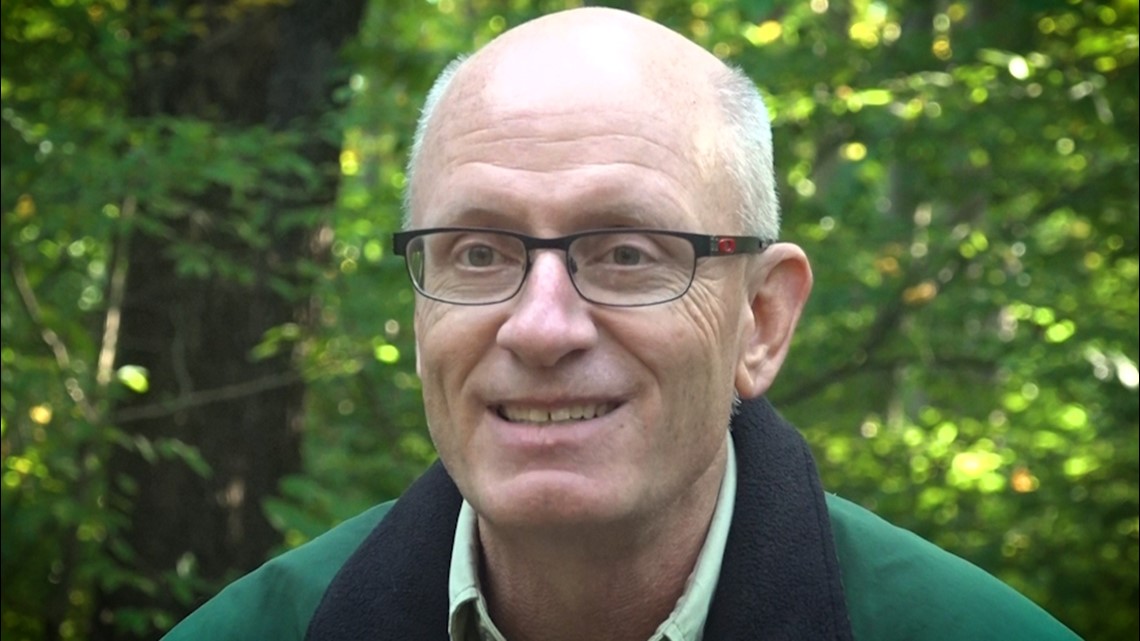
They disagree, profoundly though, on policy. But Heinrich, too, believes there is an amicable way forward even as he stresses continually about what his life here could look like if it.
“What scares me to death is if we start logging it, all of a sudden, people start getting a pretty bad taste in their mouth about what they experienced at the Hoosier National Forest,” Heinrich said.
An initial environmental draft assessment for the Buffalo Springs Restoration Project was slated to go out sometime in October, but has not yet been released. For 45 days, after the Forest Service signs that decision, the public can review the final environmental draft assessment and will be given the chance to object to it.


